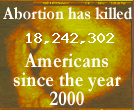 Photo Above (from http://www.spaceweather.com ):
Photo Above (from http://www.spaceweather.com ):This morning in Florida, Howard Eskildsen saw Venus after sunrise: "The clouds over Ocala parted to reveal Venus and a deep blue sky framed by fragile fluffs of clouds," he says.
Shining at magnitude -4.5, Venus is 10 times brighter than Jupiter and 16 times brighter than Sirius--the brightest star in the heavens! And while Venus is visible in broad daylight, it is easier to find before sunrise. No sky map is necessary. Simply look east for the brilliant light.
(copied from the website and E-Newsletter from the following:)
Space Weather News for Sept. 22, 2007
http://spaceweather.com/
http://spaceweather.com/
MAXIMUM VENUS: In a celestial coincidence of eye-catching proportions, Venus (the "morning star") reaches maximum brightness on Sept. 23rd, the autumnal equinox. In short, northern fall is beginning with a bright light in the dawn sky. Venus is actually bright enough to see in broad daylight, but easier to find just before sunrise. Wake up early any morning in the week ahead and look east for the brilliant light of Venus.
Bonus: Like the Moon, Venus has phases, and at the moment the planet has assumed the form of a slender crescent. If you have a backyard telescope, take a look!
AURORA SEASON BEGINS: For reasons not fully understood, the weeks around the autumnal equinox produce, on average, more geomagnetic storms than any other time of year. Even the mildest solar wind stream brushing against Earth can ignite auroras. Earth is inside a high-speed solar wind stream this weekend and another is due on Sept. 27th or 28th. High latitude sky watchers should be alert for Northern Lights. (Tip: Local midnight is often the best time to watch.)










1 comment:
Did you get to see Venus? We saw it as a family over here in Turkey and were entranced. It was beautiful!
Post a Comment